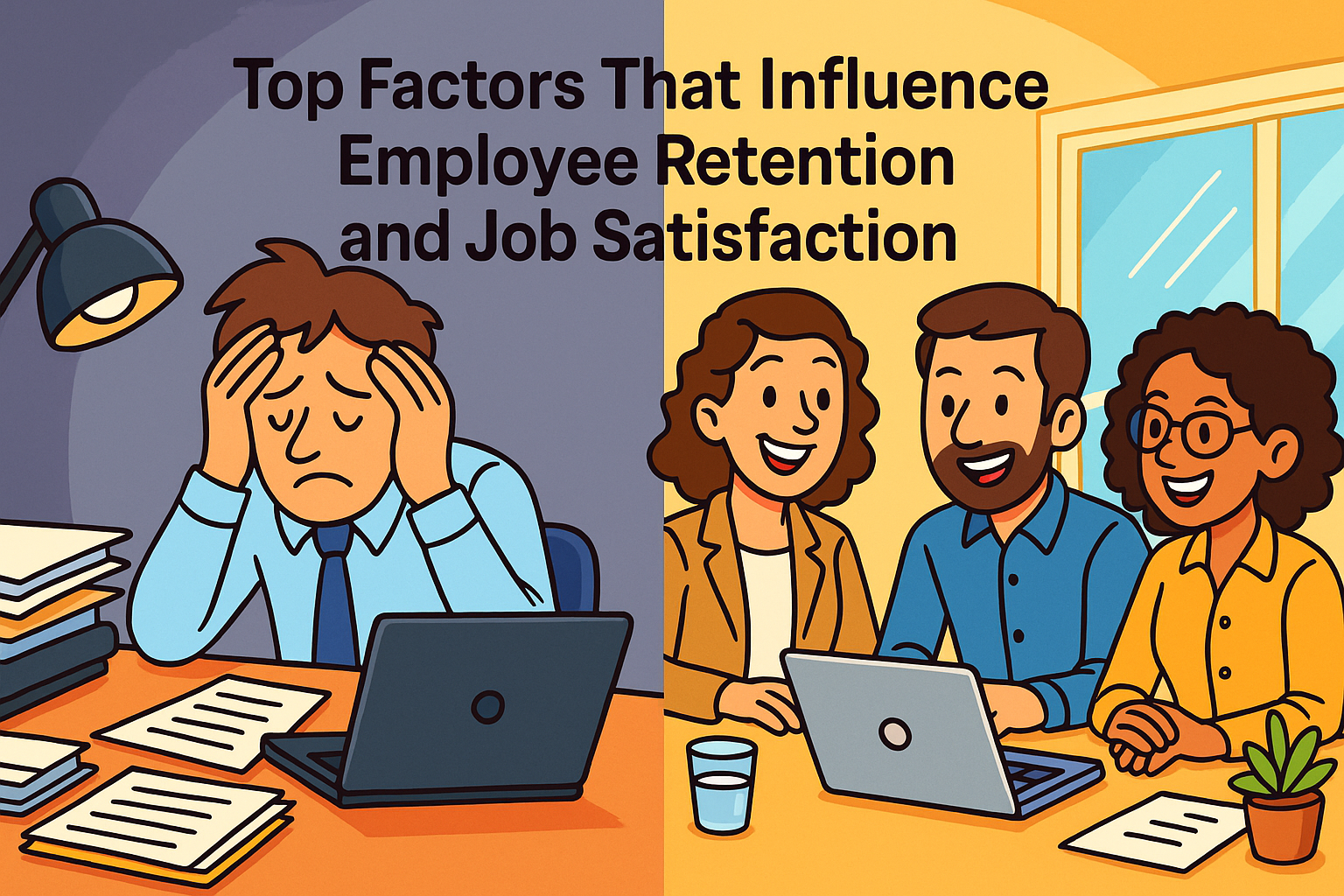In a competitive hiring market where skilled professionals have endless options, retaining top talent has become just as important as recruiting it. Yet, many organizations still underestimate what truly influences whether employees love—or leave—their jobs.
Recent surveys reveal that retention isn’t just about pay. Employees today want meaningful work, supportive leadership, work-life balance, recognition, and fair compensation. Miss one of these, and even loyal workers may start looking elsewhere.
So what are the make-or-break factors that decide whether employees stay engaged or quietly check out? Let’s explore the six proven drivers shaping job satisfaction and retention in 2025.
Meaningful Work and Growth Opportunities
Employees are far more likely to stay when their work feels purposeful and they see a path to advancement. Studies show that career development and meaningful contribution rank among the top predictors of long-term retention.
When employees can use their strengths, learn new skills, and see how their role impacts the company’s mission, satisfaction soars.
A Forbes HR Council report highlights “growth opportunities” as one of the five fundamental drivers of job satisfaction.
What breaks it: Monotonous work, lack of development, or feeling undervalued.
What makes it: Clear growth paths, mentorship, and alignment with personal values.
Tip: Offer employees training, certifications, and promotion clarity. For job seekers, ask in interviews how your future role contributes to the company’s long-term goals.
Leadership and Workplace Culture
The saying “employees don’t leave companies—they leave managers” still holds true. Leadership style and company culture are often the biggest make-or-break factor in employee satisfaction.
Toxic environments, poor communication, or inconsistent management drive turnover—even when pay is competitive. Conversely, supportive, transparent leaders create loyalty and psychological safety.
A 2025 Forbes article emphasizes leadership and culture as the “core pillars” of employee loyalty and retention.
What breaks it: Micromanagement, poor communication, lack of trust.
What makes it: Empathetic leadership, inclusion, and shared values.
Tip: Strong leaders listen more than they talk, recognize effort, and model the culture they want to see.
Fair Pay, Benefits, and Resources
While salary isn’t the only factor, fair compensation and access to resources remain essential. Employees who feel underpaid or unsupported are unlikely to stay engaged.
According to Nectar HR, 81% of employees cite benefits as a top reason to stay, followed closely by fair pay and work-life balance.
What breaks it: Underpayment, outdated benefits, lack of essential tools or support.
What makes it: Transparent pay scales, modern benefits, and resource availability.
Tip: Regularly benchmark salaries and update benefits to reflect current market trends and employee needs.
Work-Life Balance and Flexibility
The post-pandemic workplace has permanently shifted priorities. Employees value flexibility more than ever, with hybrid and remote work options now a major factor in job satisfaction.
A 2024 study cited by The Guardian found hybrid workers are happier, healthier, and more productive than those in rigid on-site roles.
What breaks it: Inflexible schedules, excessive overtime, burnout.
What makes it: Flexible policies, mental health support, manageable workloads.
Tip: Respect personal boundaries and offer hybrid or flexible options whenever possible.
Recognition, Feedback, and Inclusion
A lack of recognition can quietly destroy morale. Employees want to feel seen, valued, and appreciated for their contributions.
Companies that implement structured recognition programs experience up to a 31% reduction in turnover (Gallup, 2024).
What breaks it: Ignored effort, poor feedback loops, exclusion.
What makes it: Frequent, genuine recognition and inclusive communication.
Tip: Recognition doesn’t have to be financial—public praise, handwritten notes, or celebrating milestones can go a long way.
Job Fit, Security, and Value Alignment
Finally, employees stay longer when their values align with the company’s mission and they feel secure in their position.
A role that fits one’s skills, values, and expectations leads to higher engagement, while mismatched roles or unstable environments accelerate turnover.
The concept of “job embeddedness” shows that alignment between personal and organizational values is one of the strongest predictors of retention.
What breaks it: Mismatch between personal and company values, unclear role expectations, job insecurity.
What makes it: Defined roles, transparent communication, long-term stability.
Tip: Hire for cultural fit as much as for skill. Employees should ask themselves, “Do my values align with this company’s?”
Employees stay when they find meaning, growth, and respect in their work. They leave when those needs go unmet. Focus on leadership, culture, flexibility, recognition, fair pay, and growth opportunities to build loyalty that lasts.
FAQ
Q: What’s the #1 reason employees leave their jobs?
A: Leadership and culture. Poor management and toxic environments remain the top drivers of turnover.
Q: How can companies boost retention quickly?
A: Improve communication, recognize achievements, and conduct “stay interviews” to address concerns before employees leave.
Q: Does remote work improve job satisfaction?
A: Yes—studies show hybrid and remote flexibility significantly reduce burnout and boost engagement.
Q: What’s the best way to measure job satisfaction?
A: Regular engagement surveys, performance check-ins, and feedback sessions reveal early signs of disengagement.

